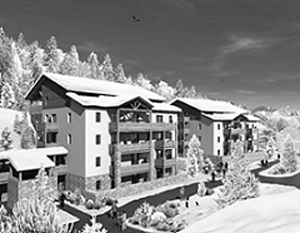History of the leaseback concept

Buying a French property is the dream of many but maybe you can’t justify the expense if you only plan to use the property for a few weeks of the year. In that case, the French leaseback scheme may be for you. ‘Leasebacks’ enable you to go to France during your holidays and rent it out for the rest of the year. French leaseback properties are a safe way to invest in property in France. With a minimum amount of risk, guaranteed rental income and no property management headaches, they have become a very practical way for holidaymakers who want a home from home.
Why were leasebacks introduced?
The initial aim of the scheme was not only to create new jobs, but also to increase the supply of holiday homes and, consequently, improve tourism in France. After the start of the Cold War in the early 50’s, the Suez Canal crisis in 1958 and the Cuban Missile Crisis in 1962, the world entered into a ‘Thaw’ period in the late 60’s. People wanted to experience something new, and this is how the great expansion of tourism happened. Around 1968-69, following the increasingly large number of tourists visiting France, the French government recognised the real need to develop investment in the construction of tourist residences.
How were leasebacks introduced?
In the early 80’s, the French government launched the LMNP (Location en Meublé Non Professionnel) which is a fiscal system to build wealth in real estate on favourable terms. The purpose of this system is to increase the quantity of accommodation on the market. Little by little, the famous motto ‘BUY TO LET’ appeared. The ‘lease’ concept was officially born when the French government decided to introduce the ‘leaseback’ model in the late 80’s to augment the amount of quality holiday accommodation available in areas capable of attracting more tourists. This strategy worked very well, all the more so as this concept appeared and began developing at a time when the country’s construction industry needed a boost.
As an incentive to investors, the government allowed the VAT (19.6% for new build properties in France) on the purchase price of properties built for tourism or ‘leaseback’ purposes, to be recovered, representing a significant saving on the purchase price. This incentive, combined with massive investments in roads, trains and supporting infrastructures, as well as climatic, culinary and cultural benefits, led France to become the world’s most visited country!
What about leasebacks today?
Nowadays, leasebacks represent an important and strategic area not only for the real estate market but also for tourism. Indeed, If you regularly have a look at our French leasebacks, you’ll see they are located in or close to tourist areas (often near the seaside or ski resorts…) For example, they’re often located in the French Alps and in the south of France (to be more accurate along the French Riviera and Languedoc region).
Leasebacks properties have a lot of advantages such as:
– Low risk investment
– Hassle free maintenance
– Financial (tax) advantages
– The investor can use the property himself (depending on the terms of acquisition)
– Possible good returns
– The asset will be well looked after
Tags: advantages of leasebacks, French leasebacks, history of leasebacks, leasebacks definition, new build market, property investment
This entry was posted
on
Monday, April 11th, 2011 at
11:29 am and is filed under
French leaseback, French New build, French Property, Leaseback Cote d Azur, Leaseback French Alps, Leaseback Languedoc, Leaseback Provence .
You can follow any responses to this entry through the
RSS 2.0 feed.
You can leave a response, or trackback from your own site.
Leave a Reply